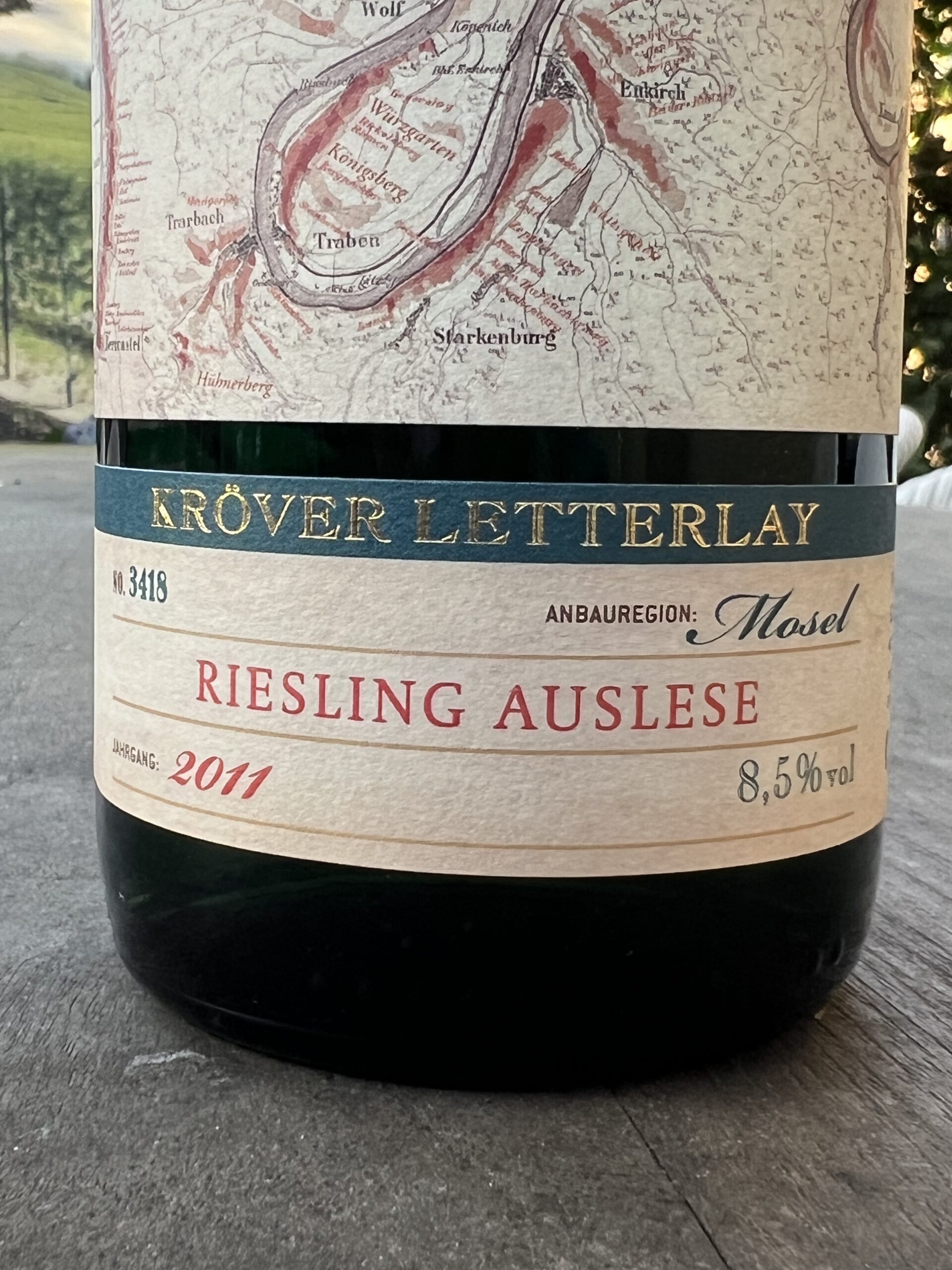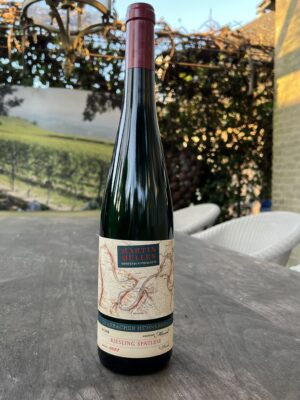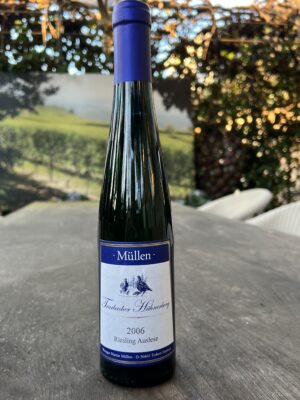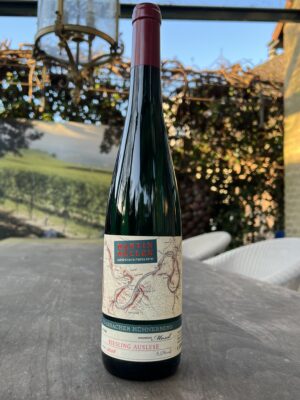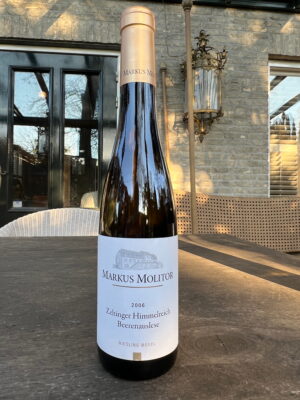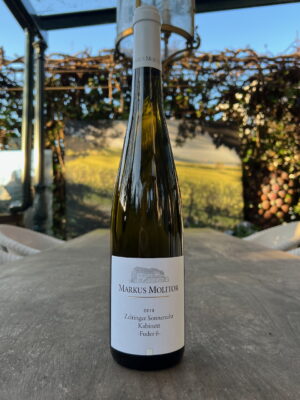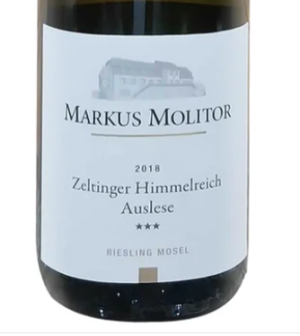Martin Müllen farms old vines in the underrated vineyards of Kröv and Trarbach, including the site he has made his flagship: Trarbacher Hühnerberg, the highest elevation of three important Einzellagen along the steep eastern bank of the Kautenbach brook that scores a deep side valley into the Mosel’s right bank at Traben-Trarbach. He restored the small remaining stand of ancient Hühnerberg vines, documented as representing a painstaking massale selection undertaken by a former owner; restored crumbling stone terraces; then replanted the majority of the site with new old-vine selections. Müllen seldom permits his fruit pre-fermentative skin contact per se, instead exclusively utilizing old basket presses that can require close to 24 hours for processing a load. The majority of Müllen wines ferment spontaneously in fuder and are only separated from their lees at bottling. That usually happens in late summer, though in many vintages one or two of those lots that rest in a cellar wet and cold even by Mosel standards do not get bottled until after the following harvest. (Müllen now has the bands on his casks replaced with zinc, because he claims the standard steel ones corrode beyond use in that cellar after only a few years.) This grower is conspicuously earnest and passionate about his mission, and any reservations I have had concerning his wines were generally on account of excess impressions of sulfur or residual sugar. I’m gradually gaining experience with bottle evolution at this address but still have not found time to go back more than a half-dozen years; and since Müllen only founded his estate in 1991, what he considers long aging potential has yet to be tested.
“We simply have to have three weeks minimum to harvest,” explained Müllen, “and sometimes four. If I had 15 or 20 pickers then it could go faster, but I wouldn’t have the control I need. The job was difficult, very difficult, and we were forced to pick through the rain,” he said of the 2014 harvest, and he judged only a minority of the botrytis that rapidly affected his grapes sufficiently noble to merit inclusion in a finished wine. “The later it got, the more fruit had to be sacrificed, and by the end,” he related, “60 percent of the Hühnerberg fruit had to be cut to the ground.” (In really sunny, dry years, that site, despite its high elevation and side-valley location, can, thanks to its springs, ripen earlier than Müllen’s vineyards in Kröv; but in 2014 that was not the case.) Despite the aforementioned sacrifices, Müllen, like most Middle Mosel growers, still averaged well over 50 hectoliters per hectare. The fact that he now has three basket presses (albeit one of them small and usually pressed into service solely for nobly sweet wine) enabled him to keep up in the cellar this vintage without sacrificing his standard 20-hour press cycle. Müllen, incidentally, is among a number of growers whose 2014s exhibit levels of sugar-free dry extract (38-41 grams per liter) unprecedented for wines that aren’t nobly sweet. This is another Mosel grower who liberally applies stars on labels and in wine descriptions, here roughly based on his impression of their relative quality. And if he didn’t, one would have to make regular references in A.P. numbers, because Müllen typically prefers to bottle each fuder separately, even when multiple lots with comparable finished residual sugar come from the same Einzellage and are destined to bear the same Prädikat. That having been noted, his 2014 collection represents a significantly smaller number of total bottlings than usual, more wine having been blended out into his generics.

